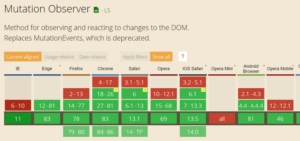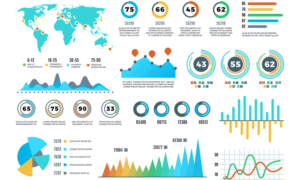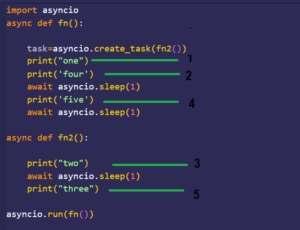Crafting Captivating Chord Progressions in FL Studio: A Comprehensive Guide

Introduction:
Chord progressions serve as the harmonic backbone of music, providing structure, emotion, and movement to compositions across all genres. In FL Studio, the process of creating chord progressions is both an art and a science, requiring an understanding of music theory principles, creative experimentation, and technical proficiency. Whether you’re a seasoned composer or a novice producer, mastering the art of chord progression creation in FL Studio can elevate your music production to new heights. In this extensive guide, we’ll explore everything you need to know about creating chord progressions in FL Studio, from basic music theory concepts to advanced techniques and workflow optimizations.
Understanding Chord Progressions:
Before diving into the process of creating chord progressions in FL Studio, it’s essential to understand the fundamental elements of chord progressions:
- Chords: Chords are groups of three or more notes played simultaneously, typically consisting of a root note, a third, and a fifth. Chords are the building blocks of harmony and form the basis of chord progressions.
- Harmony: Harmony refers to the simultaneous sounding of two or more pitches in music. Chord progressions establish harmonic relationships between chords, creating tension, release, and movement within the composition.
- Tonal Center: The tonal center, or tonic, is the central pitch or chord around which a chord progression revolves. The tonal center establishes the key and harmonic framework of the composition.
- Function: Chords within a progression serve different functions, including tonic (home), subdominant (departure), and dominant (return). Understanding chord functions is essential for creating balanced and effective progressions.
Basic Chord Progression Creation Techniques:
Creating chord progressions in FL Studio can be approached in various ways, depending on your musical background and creative preferences. Here are some basic chord progression creation techniques to get started:
- Select a Key: Choose a musical key for your chord progression, which will determine the set of notes and chords available for use. FL Studio provides a wide range of scale and chord options to choose from.
- Choose Chord Types: Experiment with different chord types, including major, minor, diminished, and augmented chords, to create different moods and emotions in your progression. Use FL Studio’s chord presets or MIDI editor to input chords easily.
- Create a Progression: Arrange chords in a sequence to create a chord progression. Experiment with different chord sequences, such as I-IV-V (tonic-subdominant-dominant) progressions, to create movement and tension in your composition.
- Explore Inversions: Experiment with chord inversions to create smooth voice leading and harmonic variation in your progressions. Inversions alter the order of notes within chords, creating different harmonic textures and colors.
- Add Extensions and Alterations: Add extensions (e.g., sevenths, ninths) and alterations (e.g., sharps, flats) to chords to add complexity and interest to your progressions. Experiment with different chord voicings and extensions to create rich and colorful harmonies.
Advanced Chord Progression Creation Techniques:
Once you’ve mastered the basics of chord progression creation in FL Studio, you can explore advanced techniques to enhance your compositions:
- Modal Interchange: Incorporate modal interchange, or borrowing chords from parallel scales or modes, to introduce unexpected harmonic colors and textures into your progressions. Experiment with borrowed chords to add depth and complexity to your compositions.
- Secondary Dominants: Use secondary dominant chords to create tension and resolution within your progressions. Secondary dominants are chords that temporarily tonicize other chords within the progression, creating harmonic interest and movement.
- Chord Substitution: Experiment with chord substitutions to add variety and interest to your progressions. Replace standard chords with substitute chords that share similar harmonic functions or qualities, creating unexpected harmonic twists and turns.
- Voice Leading: Pay close attention to voice leading, the movement of individual voices within chords, to create smooth and coherent progressions. Use FL Studio’s MIDI editor or piano roll to adjust note positions and velocities for optimal voice leading.
- Modal Interplay: Explore modal interplay by alternating between different scales or modes within your progressions. Experiment with modal mixture, modal borrowing, and modal modulation to create tension, release, and harmonic variation in your compositions.
Workflow Optimization:
Optimizing your workflow is essential for efficient and productive chord progression creation in FL Studio. Here are some tips for streamlining your workflow:
- Template Creation: Create templates with pre-configured chords, scales, and settings to speed up the chord progression creation process and maintain consistency in your compositions.
- Chord Libraries: Build a library of chord progressions, presets, and MIDI patterns to use as starting points for your compositions. Organize your chord library into logical folders and categories for easy access and inspiration.
- Keyboard Shortcuts: Learn and use keyboard shortcuts to navigate FL Studio quickly and perform common tasks such as chord entry, editing, and playback.
- Experimentation: Don’t be afraid to experiment and explore different ideas and approaches to chord progression creation. Use FL Studio’s non-destructive editing features to try out new ideas and revert to previous versions if needed.
- Collaboration: Collaborate with other musicians, producers, and songwriters to exchange ideas, feedback, and inspiration. Use FL Studio’s project sharing and collaboration features to work together seamlessly.
Conclusion:
Creating captivating chord progressions in FL Studio is both an art and a science, requiring creativity, skill, and technical know-how. By mastering basic music theory concepts, exploring advanced techniques, and optimizing your workflow, you can create chord progressions that captivate listeners, evoke emotions, and elevate your music to new heights. So fire up FL Studio, unleash your creativity, and let the chord progression-making adventure begin!




